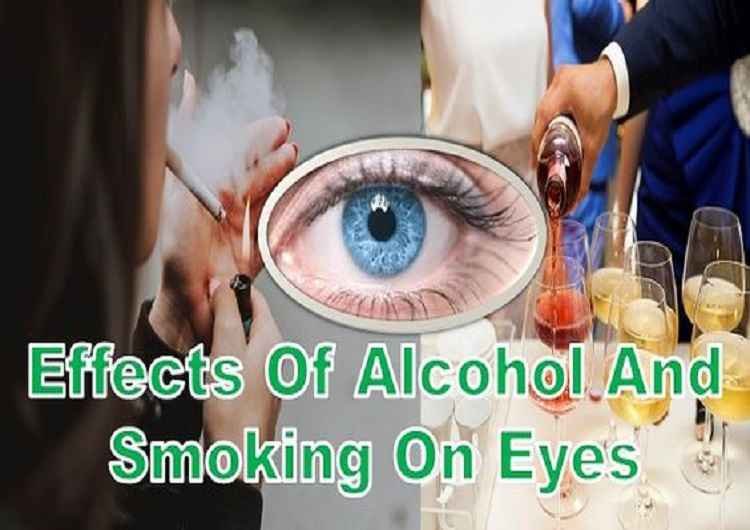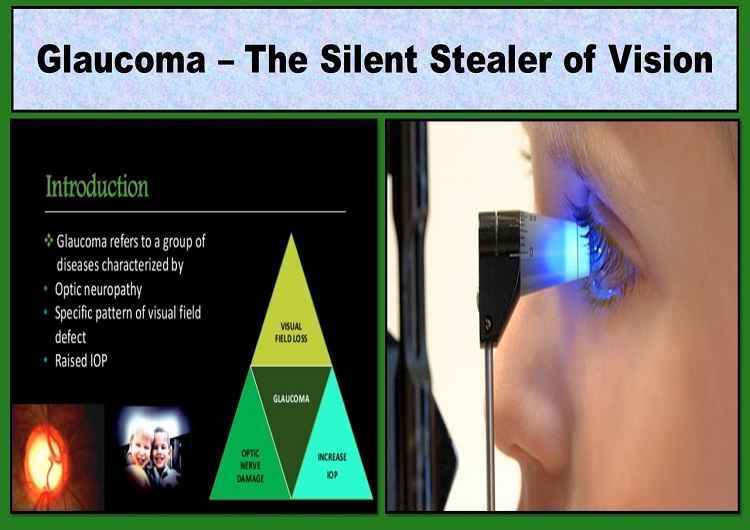All about negative side effects of cigarette smoking on the eyes and the effect of alcohol on the eyes.
Smoking and Alcohol Effects on Eyes
Although a small amount of alcohol may possibly provide some health benefits according to some research, regular consumption of alcohol in excess quantity and tobacco smoking affects the eyes, along with other parts of the body in several ways.
Chronic alcoholism and smoking lead to ocular effects such as blurry and distorted vision, puffy or swollen eyes, yellow eyes, etc. These symptoms may stop shortly after a drinking episode and smoking if you discontinue alcohol consumption and tobacco smoking.
Let’s have a look at the overall effects of alcohol and smoking on the eyes.

Effects of Alcohol on eyes
Short-term effects of alcohol on eyes and eyesight
Altered pupillary reaction
Alcohol slows the pace of the communication between the neurotransmitters in the brain, which causes the iris to dilate and contract at a much slower speed. Poor eye muscle coordination is seen due to the disturbed nervous system in alcoholic, which causes distorted and double vision in alcohol consumption.
The altered pupil reaction to light is problematic for nighttime driving as the pupil can’t constrict quickly while seeing oncoming headlights.
Eyelid twitching
Also known as myokymia, eyelid twitch is common in alcoholic eyes due to disturbed neural communication of the brain and the eyelid muscles.
Reduced contrast sensitivity
The ability to distinguish objects based on differences in background colors is an important component of vision while driving. But, in alcoholic eyes, there is impaired or decreased contrast sensitivity by about 30 percent.
Decreased peripheral vision
Peripheral vision helps in motility and overall normal functioning of day-to-day life. Excessive alcohol consumption reduces the ability of peripheral vision, creating a sensation of tunnel vision.
Dry eyes
Excessive alcohol intake increases the problem of dryness because alcohol is a diuretic and a dehydrating substance. Even a small amount of alcohol exacerbates the symptoms of dryness in alcoholic eyes.
Long term effects of alcohol on eyes
Cataract formation
Studies have shown the increased risk of cataract formation in those who consume alcohol regularly in excessive quantities compared to those who do not use alcohol.
Increased risk of ARMD and CSR
Excessive alcohol increases the risk of age-related macular degeneration (ARMD) and central serous chorioretinopathy (CSR).
Vitamin deficiency
Excessive alcohol consumption leads to a fatty liver syndrome which affects the liver’s absorption intake of vitamins that are required for normal functioning of the eyes and maintaining healthy eyesight. Vitamin A deficiency leads to thinning of the cornea, night blindness, dryness, retinal photoreceptor damage, and even blindness in extreme conditions. Likewise, Vitamin B-1 (Thiamine) deficiency is common in alcoholism, which results in paresis or paralysis of the eye muscles.
Methanol Toxicity
This accidental condition occurs when the methanol concentration is high in alcohol. As little as 10 mL of pure methanol when drunk is metabolized into formic acid and can cause permanent blindness by destruction of the optic nerve (optic neuropathy.
Can alcohol increase eye pressure?
Alcohol lowers eye pressure for a short period of time. However, some studies have suggested that regular alcohol consumption increases the risk of increased eye pressure in the alcoholic eye. But it is not associated with the risk of developing glaucoma.
Puffy eyes
Excessive alcohol intake contributes to puffy eyes or swollen eyes or alcohol bags under the eyes. Puffiness in alcoholism occurs because alcohol lowers anti-diuretic hormones in the body.
Alcoholic yellow eyes
Yellowing of the eyes typically suggests that you have jaundice. Excessive alcohol consumption for a long time causes a liver disorder called jaundice. Alcoholic yellow eyes become clear after treatment of the underlying cause of jaundice and after discontinue of alcohol.
Prenatal alcohol exposure
Fetal Alcohol Syndrome may occur in an unborn baby if mother-to-be drinks excessive alcohol during her pregnancy. It is characterized by optic nerve hypoplasia, nystagmus, strabismus, and droopy eyelids.
How does smoking affect your eyes?
Smoking a cigarette, pipe or other tobacco product not only affects the smoker’s eyes but also the eyes of the people who are frequently exposed to tobacco smoke. It is a preventable cause of blindness that can be improved with lifestyle modification. Smoker’s eyes are at the risk of developing the following conditions:
Smoking and dry eye
When there are insufficient tears on the eye’s surface, which keep the eyes moist and healthy, it is known as dry eye syndrome. Watering, redness, itching, and foreign body sensation are the symptoms of dry eyes. Smoker’s eyes are nearly twice as likely to have dryness problems. Tobacco smoke is an eye irritant and worsens dry eyes, particularly in contact lens wearers.
How does smoking cause cataracts?
A cataract is a major cause of preventable blindness in older people. Smoker’s eyes are at high risk of developing cataracts compared to non-smoker’s eyes. It causes blurred vision and makes colors look yellowish, dull, or faded.
Age-related macular degeneration (ARMD)
ARMD affects the retina and central vision. Studies have shown that smokers have a three-fold increase in the risk of developing ARMD compared to those who don’t smoke. Quitting smoking at any age significantly reduces the risk of developing age-related macular degeneration.
Diabetic retinopathy
It is one of the major causes of blindness and reduced vision. It is found that smoking doubles the risk of developing diabetes and diabetic retinopathy. It also increases the rate of disease progression, thus increases the complications.
Smoking and uveitis
Uveitis can result in partial and complete loss of vision. The disease causes pain, redness, and vision problems. Smokers are more likely to develop uveitis than non-smokers.
Optic nerve problems
The optic nerve conveys the information from the eye to the brain. Damage to any part of the optic nerve leads to complete or partial vision loss. Smoking increases risk factors that can lead to glaucoma-a disease that damage the optic nerve.
Graves’ disease
Puffy eyes and bulging eyeballs are symptoms of thyroid eye disease. Smoker’s eyes with thyroid anomalies have a higher risk of developing graves’ eye changes and the increased progression of the disease.
Smoking can harm the baby’s eyes
Smoking during pregnancy potentially harms the unborn child’s eyes, among other organs. Conditions such as strabismus, nystagmus, and underdevelopment of the optic nerve are the leading cause of blindness among such children.
Smoking also increases the risk of premature delivery, which consequently develops other problems in newborn babies, such as retinopathy of prematurity (ROP).
It’s never too late to quit alcohol consumption and smoking and enjoy the benefits of a healthier body. It helps to reduce the effects of smoking and alcohol in the eyes. Above all, eyesight improves after quitting smoking and alcohol.
Also Read:
⇒ How Drug Abuse Affects The Eye
⇒ [UPDATED] List of Top 50 Ophthalmology Journals
⇒ Bandage Contact Lenses: Therapeutic Contact Lenses

